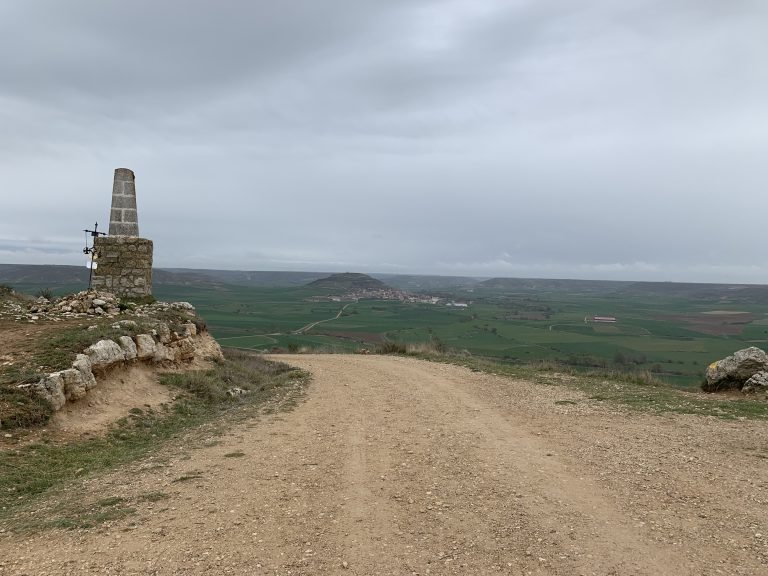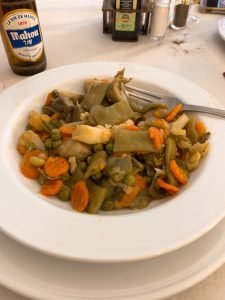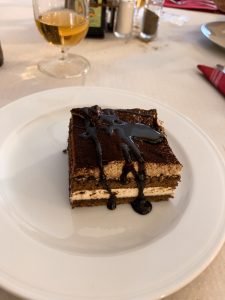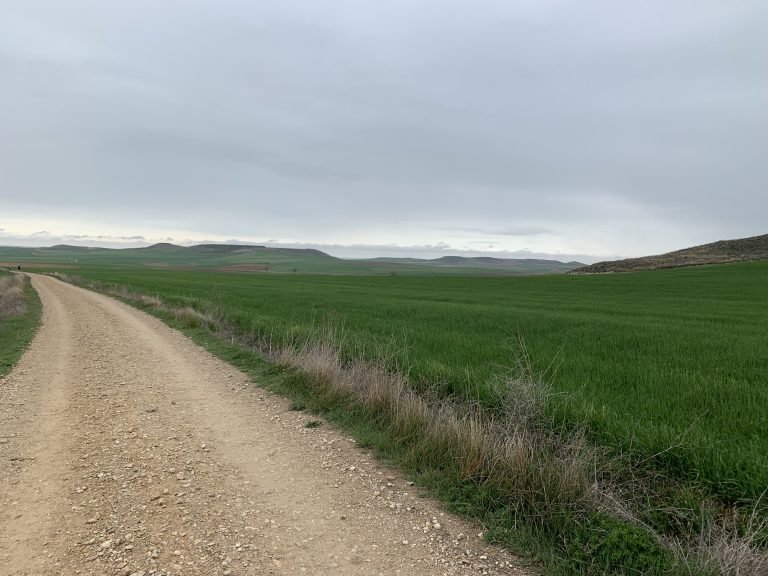The Spanish diet is usually pretty heavy on meat and seafood. Doing the Camino as a vegetarian can be challenging at times.
Spanish cuisine has limited vegetarian options.
Some safer options include:
Tortilla de Patata (omelette with eggs, potatoes and sometimes onions, but make sure to ask that they don’t have “chorizo (pork sausage)” in it)
Pimiento de Padrón (fried pepper with a sprinkle of sea salt)
Patata Bravas (potato wedges with sauce)
Gazpacho (cold tomato soup)
Some useful Spanish phrases such as “Soy vegetariano/a” or “No como carne ni mariscos”, which means “I’m vegetarian” and “I don’t eat meat or seafood”, can be useful as well.
Spain isn’t the most English-friendly country in the world. Most pilgrims you meet along the Camino Frances speak English to some degree, but local people, including those who run albergues, hotels, bars and restaurants, might only have limited English ability.
It is useful to learn a few Spanish phrases before starting the Camino, such as “¿Cuánto cuesta?” or “¿Donde está el aseo?”, which means “How much is this?” and “Where is the restroom?” Another useful thing to learn is the numbers in Spanish, which will come in handy when you are buying food and other items.
I suggest that people who have special dietary needs take extra time to learn some Spanish before starting the Camino. Familiarizing yourself with food names and ingredients in Spanish will help you to avoid ordering food you don’t want.
The weather on our third day was better than the second day. It drizzled a little bit in the morning, but the weather got better in the afternoon.
As we were going to stay the night in the same hotel, we decided to explore around a little bit. We walked along the Camino route for a few kilometers. The dirt road was still a bit muddy from the rain yesterday, but the mud was no longer glued to our shoes. The walk was considerably more comfortable than on our second day.

We left the Camino track after a few kilometers and started walking on an asphalt road. After about 6 kilometers, we stopped by a small village called Pedrosa del Príncipe. There were no shops or restaurants in the village, but there was a small bar that offered hot tea.


We headed back to the hotel after a short rest at the bar. Walking on asphalt roads is definitely more comfortable than dirt roads when the roads are wet.
We had the “Menú del Peregrino (pilgrim’s menu)” for dinner, which included a starter, main course, dessert and a drink.
It is common to see the pilgrim’s menu in restaurants along the Camino. It typically includes two plates of food, dessert and a drink to choose from, and the price is usually between €9 and €12.
We walked 20 kilometers that day but we left our backpacks in the hotel, taking only a small bag of food. This made for a significantly lighter day than usual, making our day’s walk more relaxing.
Spending those hours off the Camino wasn’t our initial plan, but it was an interesting way to explore rural Spain. We discovered that villages on the Camino route are different to villages that aren’t. Without albergues and scallop shell marks, Pedrosa del Príncipe was tranquil and unoccupied.
